OCZ Vertex 3 Pro Preview: The First SF-2500 SSD
by Anand Lal Shimpi on February 17, 2011 3:01 AM ESTAnandTech Storage Bench 2011 - Light Workload
Lighter use cases still show a benefit from the SF-2500, but again we see that a 6Gbps interface is necessary to really distance this drive from the pack:
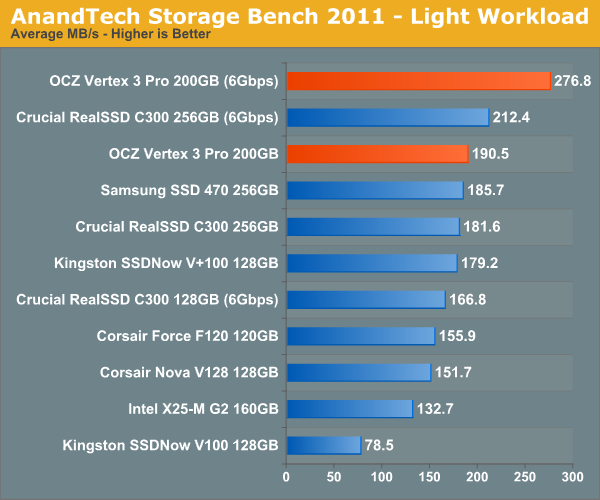
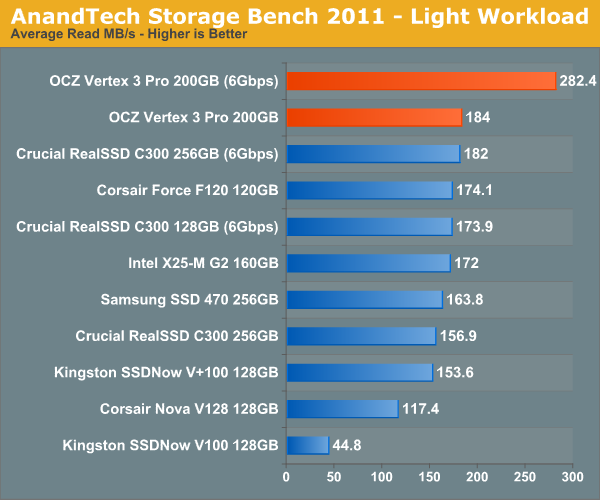
Read performance continues to be a tremendous advantage of the SF-2500. Again, 6Gbps matters a lot here.
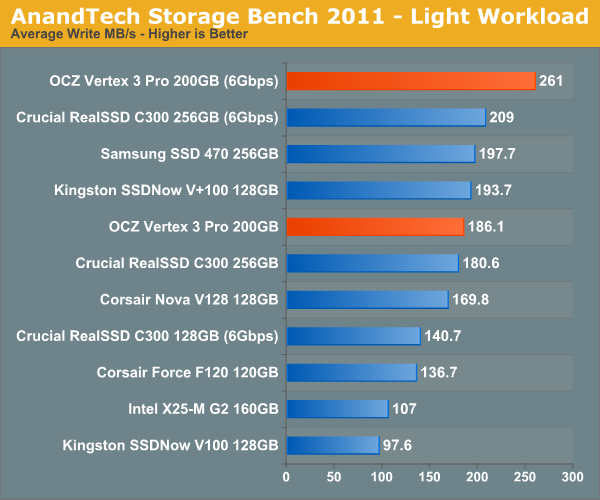
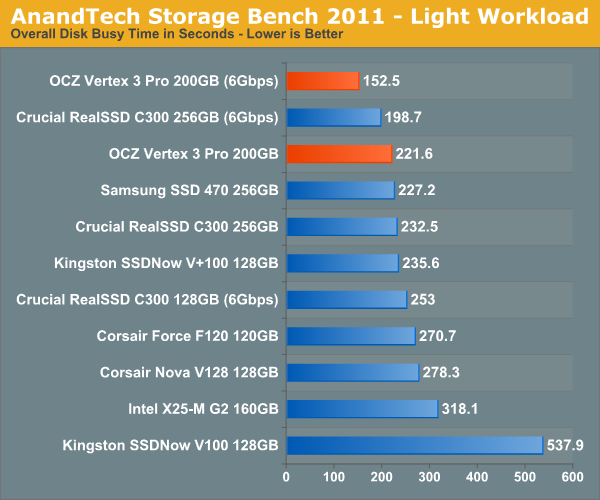
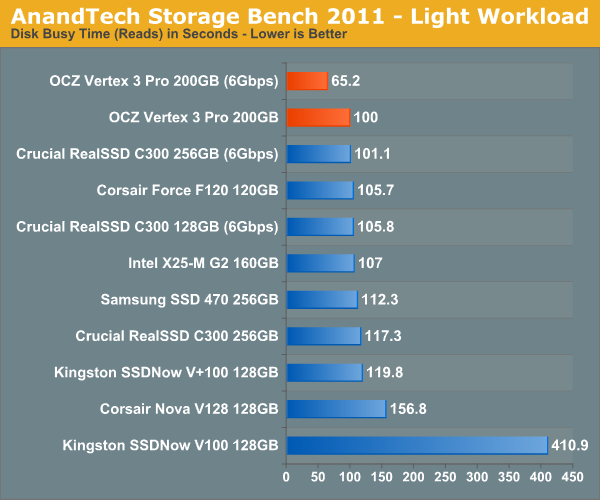











144 Comments
View All Comments
FCss - Thursday, February 17, 2011 - link
"My personal desktop sees about 7GB of writes per day." maybe a stupid question but how do you check the amount of your daily writes?And one more question: if you have a 128Gb SSD and you leave let's say 40Gb unformated so the user can't fill up the disk, will the controller use this space the same way as it would belong to the spare area?
Quindor - Thursday, February 17, 2011 - link
I use a program called "HDDLED" for this. It shows you some easily accessible leds on your screen and if you hover over it, you can see the current and total disk usage since your PC was booted up.FCss - Thursday, February 17, 2011 - link
thanks, a great softwareBreit - Thursday, February 17, 2011 - link
isn't the totally written bytes to the drive since manufacturing be part of the smart data you can read from your drive? all you have to do then is noting down the value when you boot up your pc in the morning and subtract that from the actual value you read there the next day.Chloiber - Thursday, February 17, 2011 - link
Or you can just take the average..marraco - Thursday, February 17, 2011 - link
Vertex 2 takes advantage of unformated space. So OCZ advices to leave 20% of space unformated , (although to improve garbage collection, but it means that unformated space is used)7Enigma - Thursday, February 17, 2011 - link
Comon Anand! In your example you have 185GB free on a 256GB drive. I think that is the least likely scenario that paints an overly optimistic case in terms of write life. Everyone knows not to completely fill up their drive but are you telling me that the vast majority of users are going to have 78% of their drive free at all times? I just don't buy it.The more common scenario is that a consumer purchases a drive slightly larger then needed (due to how expensive these luxuries still are). So that 256GB drive probably will only have 20-40GB free. Do that and that 36 days for a single use of the NAND becomes ~5-8 days (no way to move static data around at this capacity level). Factor in write amplification (0.6X to 10X) and you lower the time to between 4-25 years for hitting that 3000X cap.
Still not a HUGE problem, but much more relevant then saying this drive will last for hundreds of years (not counting NAND lifespan itself).
7Enigma - Thursday, February 17, 2011 - link
Bah I thought the write amplification was 1.6X. That changes the numbers considerably (enough that the point is moot). I still think the example in the article was not a normal circumstance but it seems to still not be an issue.<pie to face>
mark53916 - Thursday, February 17, 2011 - link
Encrypted files are not compressible, so you won't get any advantagefrom the hardware write compression.
7Enigma - Thursday, February 17, 2011 - link
Hi Anand,Looks like one of the numbers is incorrect in this chart. Right now it shows LOWER performance after TRIM then when the drive was completely full. The 230MB/sec value seems to be incorrect.